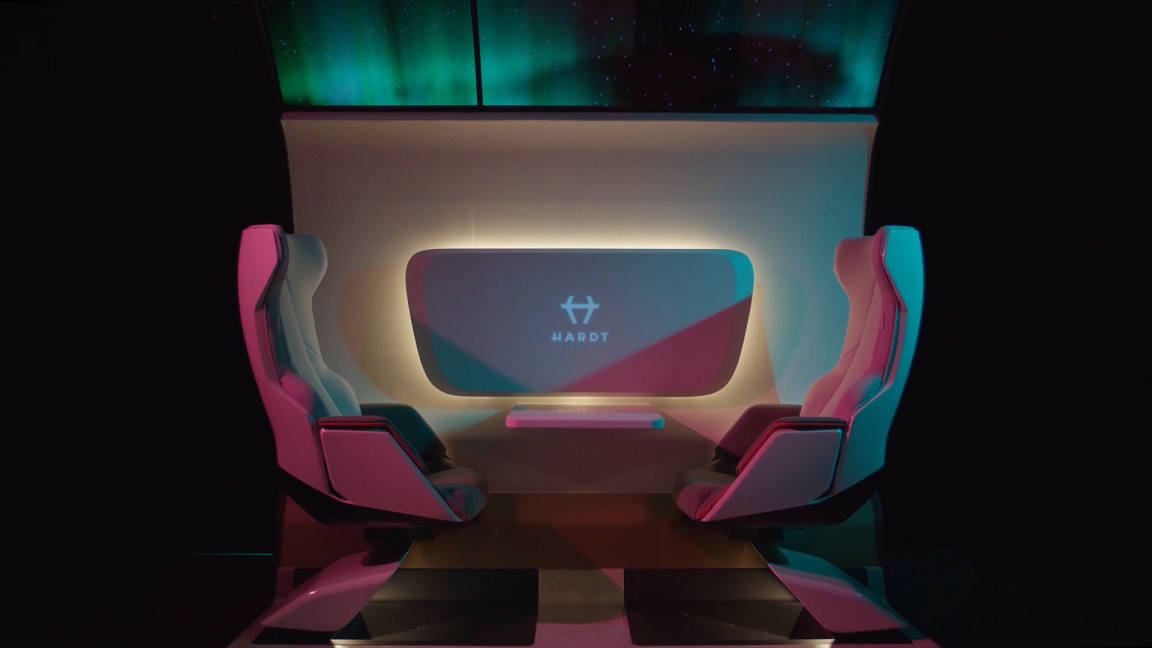Experience the future of travel with first hyperloop interior mock-up
Dutch hyperloop company Hardt presents a fully functional life-size segment of the hyperloop interior, the CABIN-1. For the first time, future travelers can get an impression of what traveling with this new sustainable way of high-speed travel will be like. As soon as the current situation allows for it, CABIN-1 will be visiting public places throughout Europe.
Jelte Altena, Project Lead at Hardt Hyperloop explains: “Since 2017 Hardt has made major progress in the development of hyperloop and proving it to be a feasible alternative for short-haul flights. However, despite great images and videos, the hyperloop remains something abstract. With the CABIN-1 we aim to now also make hyperloop more tangible and accessible for the public.“
The CABIN-1 is a 3 meter segment of a hyperloop vehicle with a completely finished interior that was developed in collaboration with the German companies Recaro and Continental, industry leaders in vehicle seats and interior, safety and passenger comfort.
Jose Eduardo Sanchez, Head of Design at Hardt Hyperloop, explains: “The vehicle interior is designed to provide an open, welcoming environment, focused on the basics of human perception. While the seat layout, ergonomics and materials make for a great travel experience, the ceiling of the vehicle is fitted with an artificial sky that completely opens the vehicle interior and increases the feeling of space. Imagine traveling under an aurora, or even a live feed being projected from the International Space Station. Possibilities are limitless.”
The physical experience of the vehicle is enriched by using augmented reality. The Microsoft HoloLens 2 experience and iPad Pro app, both created by Accenture, transform the cabin model into a full-size vehicle providing an immersive experience of what traveling by hyperloop will be like in the year 2028.
This digital experience takes the visitor on a fictitious, yet possible first hyperloop route from Amsterdam, via Eindhoven and Dusseldorf, to Berlin, a trip that by hyperloop would take just over an hour. The first actual hyperloop route could be realized by 2028. The implementation of a pan-European hyperloop network would greatly enlarge commuting zones, allowing people to live how and where they want, even across borders, while staying within the maximum desired commute of 60 minutes.
As soon as safely possible, CABIN-1 will be making its way to events and public places such as public transport hubs. Until then, you can explore CABIN-1, and soon find out when it will be near you, online at Experience Hyperloop.

